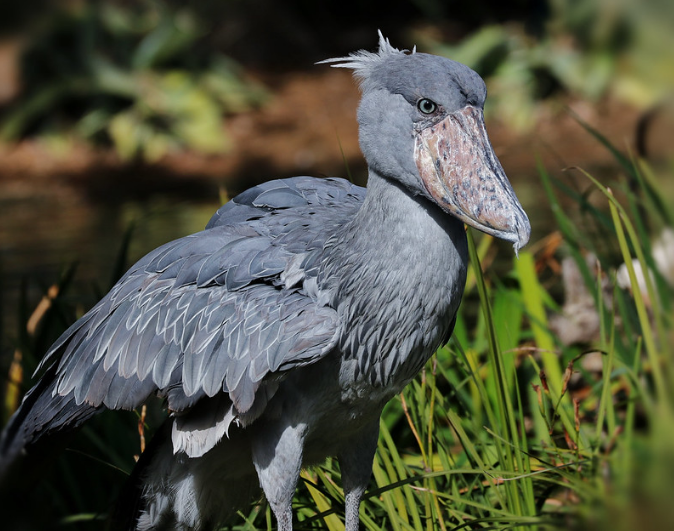The shoe-bill stork | Uganda birding
The shoe-bill stork | Uganda birding: This is an impressive and somewhat ugly dinosaur-like bird found in Uganda. The adult is mainly grey while the juveniles are browner. Their beak is the reason as to why they are called “shoebill storks”. Their long, shoe-shaped beak is used to eat small animals and fish in a single gulp. In addition, the end of the beak curves down and forms a hook. This sharp curve is used to pierce through the bodies of their prey to assist in digestion.

Shoe-bill facts
The young will attack each other
Young shoe-bills will fight with one another. It is known that shoebill storks are shy animals that prefer to be alone they also have territorial behaviors. When more than one shoebill is born in the same nest, they will compete for attention from the mother. More so, the larger bird forces the smaller birds to flee from the nest and live on their own.
They are brave
Surprisingly, the shoebill stork does not take no for an answer! The species is aggressive whereby it fights off small and large animals alike. If a weak animal comes across their path, it will leap from their hiding place to turn it into a meal. Storks have been known to fight Nile crocodiles, other species of storks, and even each other. However, even though they pick fights, they do not win all of the time.
They are extremely patient
These storks are generally masters of patience. They will stand in water, large patches of grass, and other hiding places for hours. They know that if they wait long enough for the right moment, they will find their next meal.
Sheobils don’t make much noise, but they are loud when they do
These birds basically never make noise when hunting for prey. Come mating time, the shoebill will release a loud cry to attract a partner. In fact, it is a series of loud, terrifying popping noises.
They live for up to 35 years
The shoebill stork can live for up to 35 years. Generally, they can live long enough to see seven generations.
They use their wings to fly and keep balance
They use their wings to fly, intimidate predators, and keep their balance. Like other birds, they can also easily lose balance because they stand on two legs.
Live in Marshes
A marsh is a wetland that is covered in water for extended periods of time. Marshes rarely have trees but the grass is tall and forms hiding places for these species. These marshes are found on the edges of lakes and rivers where the waterbed is higher.
They are solitary creatures
Even if a male and female are paired and mate together, they will hunt and eat separately. It is rare to see two shoebills working together. Once mating season is completed, these birds will separate. Even though they do not migrate, it is rare that they will encounter each other after the mating season ends.
The young are dependent until they are 2.5 months old
It takes 140 days for a new egg to hatch and turn into offspring that can be fully independent. Once the offspring can hunt for itself and demonstrate the basic requirements of survival, the mother forces it to leave the nest.













1 Comment
[…] a few. With bird species such as African fish eagles, martial eagles, red billed buffalo weavers, shoebill stork, white headed buffalo weavers, turacos, Grey plantain eaters, sunbirds, lapwings, jacanas, […]